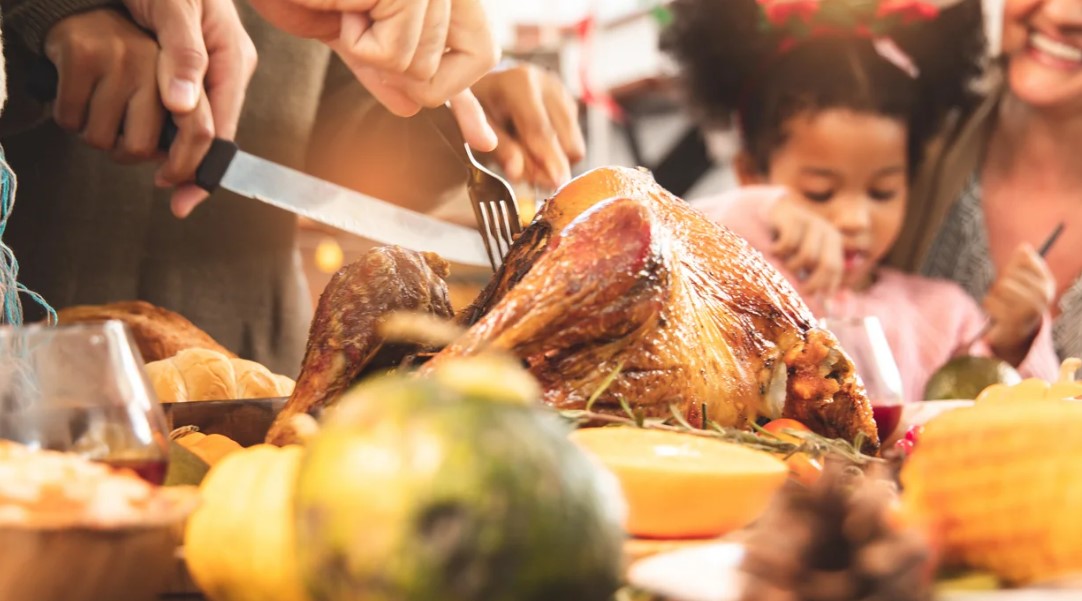Holiday meals offer an opportunity to indulge in some favorite foods. However, eating a Thanksgiving feast, while still maintaining healthy blood sugar levels, may seem challenging if you have diabetes, but it's doable, experts say.
Nearly 40 million Americans deal with this issue every day, and not just for holiday meals. Here are some tips on how to navigate the holiday feast.
Don't skip breakfast
To start: Don't skip breakfast or try to save your calories and carbohydrates for later in the day. That can just make you hungrier and work against healthy eating later in the day, according to experts at the MOLLY Diabetes Education and Management Center for Adults and Children, a part of Hackensack Meridian Health, in Maywood, N.J.
Instead, eat a healthy breakfast such as a frittata with lots of vegetables or Greek yogurt with nuts.
Think ahead
For the holiday meal, think ahead about which foods you want most. Scan the entire table and decide what you'll eat and what you won't.
Grab a smaller plate
A smaller plate can make your plate look fuller while saving some calories.
Fill up on protein
Protein -- in this case, turkey -- will get you fuller faster. Not only does that have less impact on your blood sugar, but it can lower your carbohydrate cravings. However, you should avoid fried turkey or adding butter.
RELATED: Make A Thanksgiving Plan to Be Healthy
Fill up on non-starchy vegetables
Fill up on non-starchy veggies, such as asparagus, brussels sprouts, cauliflower and celery, and skip dips and gravies.
Choose a healthy drink
Drinking water, tea or seltzer instead of sugar-laden drinks can help you stay on track.
Don't overindulge on dessert
It's OK to have a small portion of your favorite dessert -- just eat slowly and enjoy it.
Try a healthier substitute
For those who want to enjoy healthier versions of their favorite holiday treats, a registered dietitian from Baylor College of Medicine in Houston offers some easy suggestions.
Veggies can help with the post-meal fatigue you usually feel after a big meal, says Courtney Cary, who works in the Department of Medicine–Gastroenterology and Hepatology.
Fiber from veggies can help, even when those veggies are creamed or part of a casserole.
Instead of using heavy cream in green bean casserole or creamed spinach, use fat-free half and half. You'll still get a creamy flavor, but with little saturated fat.
Replace the solid fat in a recipe with butter or oil to make more heart-healthy dishes, Cary suggests. Use low-fat or part-skim cheese to decrease the saturated fat further.
Get creamy mashed potatoes by using butter and skim milk instead of butter and heavy cream.
"Eating decadent and rich food one day out of the year won't kill you, but that high concentration of saturated fat over multiple days from leftovers can have an impact," Cary said in a Baylor news release.
Nuts can help offset some of the blood sugar changes from starchy and sugary foods.
The high fructose corn syrup in canned cranberry sauce is detrimental to blood sugar. Even adding a whole cup of sugar to fresh cranberries is better, Cary suggests. Add nuts to mitigate blood sugar reaction.
"Adding nuts won't give you that hypoglycemia that you get after having big meals or large amounts of sugar," she shares.
Reactive hypoglycemia happens when eating concentrated sugar or sweets without fat, fiber or protein. High concentrations of starchy foods in one sitting can cause this, leading to stress on the body.
Substitutes are possible without compromising on flavor.
Vegetable or canola oil can be used in the place of butter, solid fat or even coconut oil, for example, to decrease the saturated fat content of a dessert, Cary adds.
"Even if something calls for coconut oil, swapping it with butter is better because coconut oil has a higher concentration of saturated fat than butter," Cary notes.
"Also, adding things like healthy fats, protein and fiber to desserts really helps with the reaction on your blood sugar," she says.
Increase fiber by swapping whole wheat flour for the recipe's white flour. Using wheat flour and adding nuts to the dessert will still cause blood sugar to rise, but it will fall much more slowly instead of going straight down.
Watch your alcohol consumption
Watch out for too much alcohol consumption, which can affect blood sugar and cause reflux.
Hard liquors have the lowest impact on these, while wine and beer contain sugar. Mixing hard liquors with a sugar-free mixer is a better option, Cary says.
Navigating the Thanksgiving meal can be both tempting and challenging, but with these tips, you can remain healthy while enjoying a delicious meal with the family.









